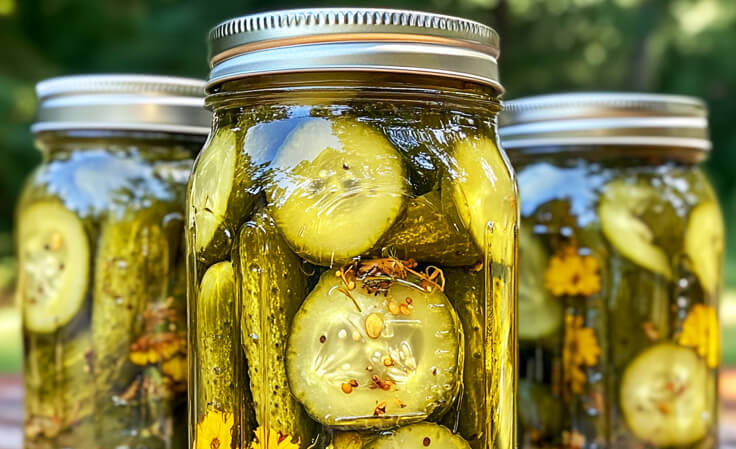
Fermented Pickles
Happy fermenting! Remember, the joy of pickling is in the journey as much as the crunch. Enjoy your homemade fermented pickles and the health benefits they bring!
Equipment
- Mason Jars
- Fermentation Weights
Ingredients
- Cucumbers Choose fresh, firm cucumbers free of blemishes. Small to medium sized cucumbers work best.
- Spices and Herbs Common spices include garlic, dill, mustard seeds, and peppercorns
- Brine Solution Use non-iodized salt, like sea salt or pickling salt, as iodine can inhibit fermentation. The general ratio is about 2 tablespoons of salt per quart of water.
Instructions
- Preparing the Cucumbers: Start by washing your cucumbers thoroughly. Trim off the blossom end, as it contains enzymes that can cause softening. You can leave the cucumbers whole, slice them into spears, or cut them into coins, depending on your preference.
- Making the Brine: Dissolve 2 tablespoons of non-iodized salt in 1 quart of water. If you're making a larger batch, simply scale up the amount of brine accordingly. Make sure the salt is fully dissolved to ensure even fermentation.
- Packing the Jars: Place your spices and herbs at the bottom of the jar. Next, pack the cucumbers tightly, leaving about an inch of headspace. Pour the brine over the cucumbers, ensuring they are completely submerged. Add your fermentation weight to keep them below the surface of the brine.
- Fermentation Process: Seal the jar and place it in a cool, dark place, like a pantry or cupboard. The ideal temperature for fermentation is between 65-75°F (18-24°C). Check the pickles daily to ensure they remain submerged. After 3-7 days, your pickles should be tangy and ready to eat. Taste them daily after the third day to find your preferred level of fermentation.